Sushant Gupta
Is an Online Geek. Who Diggs out the different ways for how can we make money online. He has been earning through e-commerce sites for years and wants to share his experience with all.
Today there is a lot of buzz in the app development world and especially the android one. These mobile apps have become...
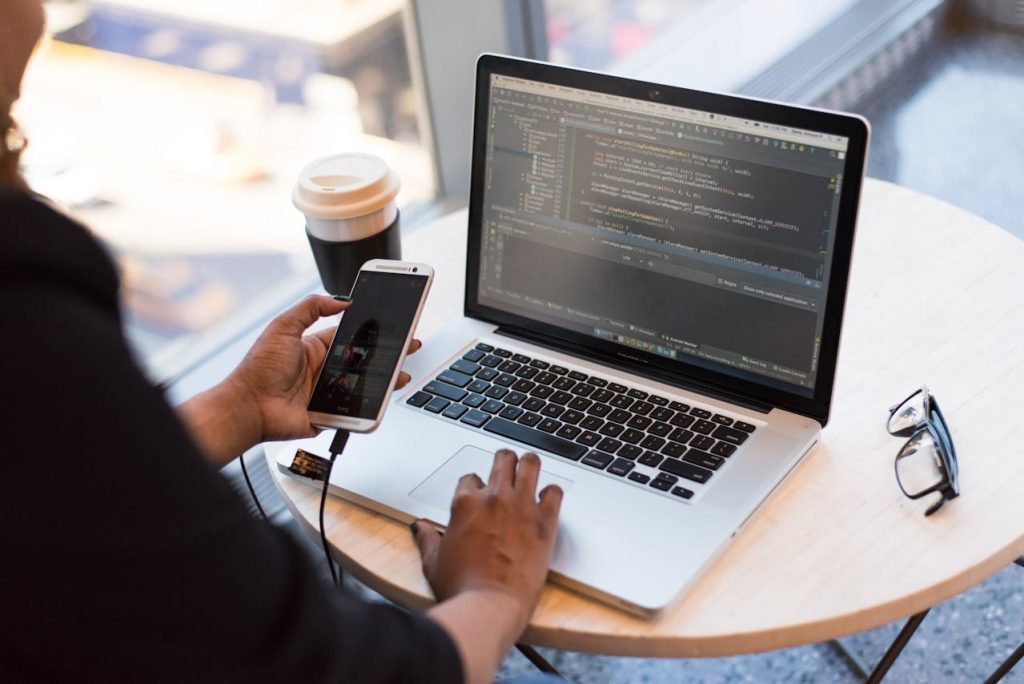
Image Credits: pexels
Today there is a lot of buzz in the app development world and especially the android one. These mobile apps have become immensely popular and surpassed Apple’s App Store as the largest smartphone application distribution platform.
According to a survey, there are around 3.8 billion androids, active users, worldwide and the platform holds the largest installed base of any operating system. Along with this, Google Play Store featured over 3 million apps in January 2021.
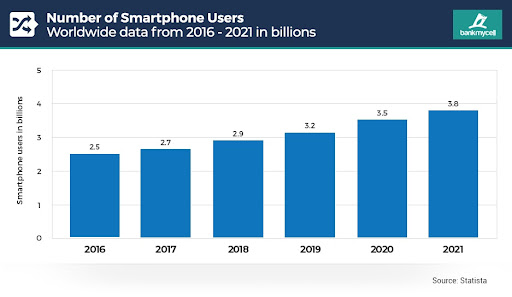
So, what affects Android app development cost? A question that many people ask themselves. Its answer is complicated and depends on what type of Android app you’re developing, how much time you want it to finish, or how big your budget is for the project.
For this, I have written this detailed write-up to make you clear better on this note. Here, you will know all the factors that guarantee your app development cost and the benefits of android app development.
So, let’s start reading…
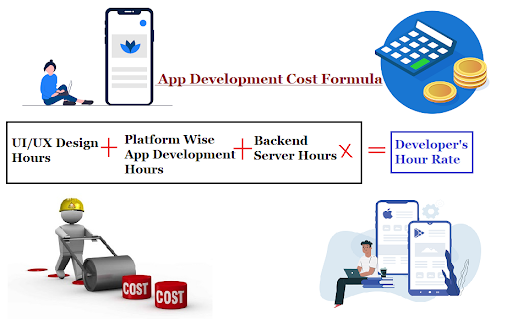
Android application development is an expensive and time-consuming process. Though, you don’t have to become an accountant to calculate the cost of Android app development. There is a formula to calculate the app development cost-effectively. Just take the amount of time you expect your project will require and multiply it by one’s hourly rate.
The Android app development process is longer than most people realize. The foremost step of app development is App Discovery – a crucial step for verifying and validating an idea that has been conceptualized before beginning design sprints or coding an application from scratch.
Luckily there are numerous ways to determine what may be worth pursuing before investing hours into designing an application at all costs. These include Design Sprinting (a common practice), prototyping, user testing, plus traditional methods such as interviews with current customers/users about their problems and wants.
Hence, you know where your strengths and weaknesses lie when developing something new via mobile devices. For better execution of the process, know the methods followed in the app discovery process.
Researching your market is essential if you want to be successful in the Android app development business. This process includes analyzing competitors, assessing customer needs and wants, and figuring out what elements stand between users’ satisfaction with their experience using an application.
Creating user personas is an essential step in the process for effective Android app development. By determining why users make their decisions, developers will be able to establish factors such as the size of the app and UI/UX design more easily than ever before.
Market Capitalization is one of the essential tasks when coming up with an app. We use many different factors to find out the estimated market value for your idea, including its potential audience and revenue generation capability, as well as how much funding it can attract.
In short, the whole App Discovery process relies heavily on what makes one project shine over another because of our society’s need to be constantly stimulated with something different when looking at their phones every day.
Android app creation is an expensive yet rewarding way to make a mark in the world of tech. The most significant factor contributing to this cost, according to some experts, would be its diversity and breadth of features. Let’s take a look at their major types:
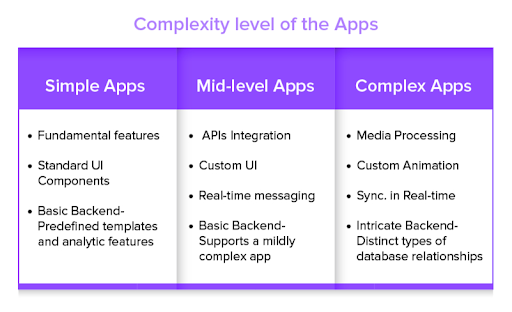
The deployment architecture for a backend is made up of two types, BaaS and Custom. With Baas development, you will be given an already-made system that does not allow much room to change the programming code as it’s been prebuilt by someone else.
Conversely, custom backends have more possibilities in how your software operates because they were built from scratch specifically for whatever application you’re using them on, like creating data storage or launching email campaigns.
There are many ways in which this third-party application can strengthen your business and make it more competitive. One such method is integrating your app with other apps to perform better tasks that the app would otherwise be incapable of functioning independently.
For example, suppose you have a company that sells coffee beans online. In that case, they may want to integrate their website with Google or Facebook so customers can sign up without entering any personal information like an email address or phone number – making things much simpler.
Today, there are an endless amount of applications out there vying for our attention every day, both digitally and physically. Third-party integration has become increasingly important because sometimes, one single app just cannot do everything needed by itself.
An Admin panel is a crucial part of any application. It allows the users to analyze statistics related to their interactions with your app, keep track of profiles they have created on apps that need one-time logins or passwords, and generally update content without involving Android app builders.
In-app purchases are a vital component of many apps today. This makes it easier for users to buy items, eliminating switching back and forth between different payment sources like credit cards or PayPal. However, these in-store transactions come with an additional development cost that needs to be considered while building your app’s budget plan.
Apps perform monetary transactions through their respective store with help from in-app purchase functionality, eliminating the dependency on other modes of payments such as cash or credit card outside of the application. But this simplicity comes at a price–additional costs related to developing android applications must also be accounted for during its design phase.
One of the main features that Android application developers should include is access to hardware for their app to work. It may sound irrelevant at first, but many apps require it, and without this feature, your customer may not be able to use your creation as intended due to a lack of functionality.
When digital platforms are constantly evolving, it’s essential for app owners to know how much time the app development will take. The reason being is some programs won’t run unless the programmer has all the necessary permissions from Google Play Services.
Android apps come today in various types. They range from simple games to complex business applications. Android app development cost relies on the type you are looking for; there is an application for everyone.
Below are the major app types available in the market:
M-Commerce is the future of eCommerce. It can perform effectively in real-time on top of handling millions at once–with robust security. These apps are rapidly gaining popularity and continue to rank high in today’s market, which has diminished the need for brick-and-mortar stores or websites due to such features. It makes sense that these applications have a little higher cost because they’ve loaded with tons more impressive features than their predecessors.
Stand-alone apps are the ones that don’t require third-party integration, meaning they aren’t dependent on any device’s functions and features. For instance, Clock, Calendar Calculator comes under this category. These applications are straightforward, so by default, their app development cost is low.
Enterprise apps are the secret sauce of any business. They cater to your specific needs and have a higher price tag for them. Still, they’re well worth every penny when you need something that can scale with your organization’s ever-changing landscape or provide security features not offered by consumer applications.
With the development of social networking apps, we can build relationships with people worldwide. Apps like Facebook, Instagram, and Snapchat are just some examples that allow us not only to communicate but share our lives digitally as well. These applications work by connecting you through your phone’s internet connection while also providing a way for you to access other hardware systems on your device such as cameras or audio recorders–which means they can be far more complex than regular.
Android apps because millions need them at once! Even though these applications come with higher costs due to their complexity level (think: server-side storage), it is worth interacting socially without having geographic limitations from communicating face-to-face.
The IoT is a relatively new technology, but it has the potential to change how we interact with our world fundamentally. This brave new paradigm will need apps that are highly dependent on hardware devices for extracting data or sending commands. You can enable these tasks by implementing special ROMs– like those used in Android mobile app development- that affect the final cost of developing an application.
Some of the most popular on-demand apps are Uber, Lyft, and Postmates. They offer a sleek interface that’s easy to use, so no matter what your destination might be, you can get there in just minutes with one tap. However, this kind of convenience doesn’t come without its drawbacks. These services are notoriously expensive for their users because they charge by distance or time instead of flat rates, making it hard to budget accurately for whatever trip you’re taking.
They have been around since 2008 when an app called GetTaxi was released but didn’t gain popularity until 2009 when Hailo was launched, followed closely behind by SideCar. More recently, IHOP became available via this service, allowing people who want.
The animations and designs of any Android app are factors that determine how much an app will cost. You can find many different styles, but the costs for implementing them may vary depending on their type or quality.
UI Design- Material design is a type of Android app development that creates creativity and boldness for apps. iOS, on the other hand, has Flat Design as its ideal. The cost difference between both gives yet another factor to consider when budgeting your project’s final costs.
Wireframing– Developers employ wireframes to create a compelling user experience with maps; tools like MARVEL, Balsamiq Photoshop can be used depending on preference or client approval before wireframe creation begins.
Animation- It is the animation of objects and people on screens. It is used for various reasons, such as to make an app attractive or intuitive; it’s also seen in gaming apps like Candy Crush Saga and social media sites like Instagram. You can code animation, but it will take time in the complex designing processes, so Android apps that use it often have higher costs than ones without animation features.
The app development world hinges on this final step. Getting an application selected by the Play Store is a must if you want to see your effort come alive in front of people’s eyes. However, there are some prerequisites you need to consider before submitting it and ensuring its success.
For any submission process to succeed, one has to follow Google’s guidelines- with their only once fee being $25 per publication, which can be put back into maintaining your product or developing new applications instead.
The app development process does not come over with the app publication successfully on the Google Play Store. There are many things ahead to do, i.e., App maintenance. It is an integral part for developers, and it can be costly too. It doesn’t matter how necessary this step may seem because eventually, you’ll have to pay back your investment which includes updating both the frontend and backend features of applications. Otherwise, they become stagnant and obsolete over time due to changes in operating systems.
Version Updates – Your app may become stagnant or obsolete if it doesn’t get updated with the latest changes in operating system features. Updating apps ensures they are compatible with newer OS upgrades while also running smoothly without issue.
Improvising App Design-With technological changes and user behavior preferences, we need to be more creative with our app designs. There is a high demand for designing apps that will meet users’ requests to have an impeccable experience when using them.
Squashing Bugs- No matter how many precautions you take against bugs entering your application, they will always find their way inside undetected from time to time. When this happens, you must fix these issues as soon as possible. Otherwise, they could become problematic for both creators and users alike by impeding smooth operation or rendering features unusable altogether, amongst other things.
If you want to create an app on the Android platform, there are two ways that you can go about it. You could hire a group of freelance developers who will work for less or put your money into one startup development company and get more attention from them than if they were working individually.
The cost depends heavily on what kind of developer is used; however, with any option available now, chances are good that developing apps at small prices has never been easier.
Larger-sized team size for Android developers in California means focusing on clients who can pay more, which has many mouths to feed. The quality work will be worth it and superior to freelance developers due to access to the latest tech stacks and professionals working diligently towards making the app the best possible. Despite the low cost of app making, some Android development companies will still help startups make their applications perfect the flow of large capital Android app development organizations looks like this.
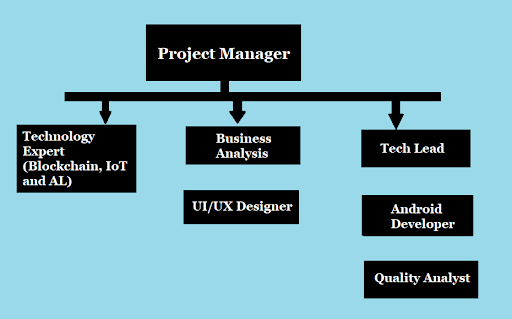
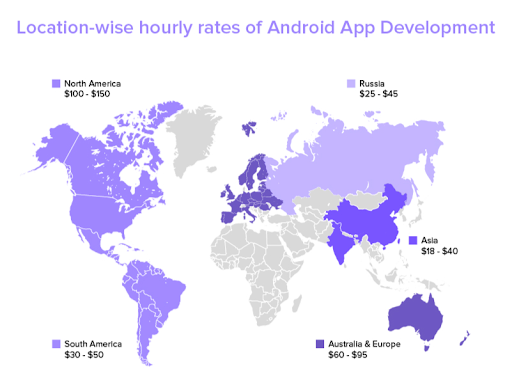
With the innovations in technology, app development has become easier and more affordable than ever before. The cost of an android app company is different from region to region due to their location factor; it can be a lot cheaper if you find your perfect match in California, but the same could even cost triple or quadruple depending on where they are located within Florida.
This is a map of the change in climate between east and west. Notice how much more humid it gets as you go from left to right? Speaking of which, you’ll find that Android app development cost in India is cheaper when compared with other countries like America or anywhere else on the western coast.
The world of mobile app development is becoming more and more immersive, with various options available. Although the cost of developing an application varies according to what features are included in it, including advanced technology partners such as Artificial Intelligence, BlockChain, Cloud-based services might multiply their complexity exponentially.
Summing up all these points, the app will cost you around $4800 to $38,000 in India and $250,000 in the US. The final cost depends upon the functionalities and features you want to add to your app.
For better assistance, you can also hire an android app development company in India. They will guide you best.
Good Luck!
Ans: Google Play Store, the world’s largest app store in terms of revenue and downloads, charges a one-time fee of $25 to publish an app.
Though, developing an app can cost from a few thousand dollars to tens of thousands, depending on the app’s complexity and other factors. It’s encouraged to put your idea for an app out there first before investing too much time into it because this way, you’ll get valuable feedback from users, which could impact how much money is needed or even if it is worth making at all.
Ans: Yes. You can visit the USPTO website to inquire about the status of patents and trademarks, specifically those relating to software and android apps. They will also provide a general overview of what is patentable in specific industries.
A guide on Google’s website provides a checklist for hire android app developers who want to publish their work through the Google Play store and legal information related to intellectual property ownership from other countries. A guide through UMG Recordings provides helpful information relating to artists’ rights to copyright music in different countries.
Anyone may obtain a US Patent simply by applying with the United States Patent & Trademark Office (USPTO). Generally speaking, anyone with sufficient skill.
Ans: The cost of developing an Android app will depend on the various factors that create an app. Some of these factors include complexity, design, features needed, and functionality.
Ans: It depends on each project and if you outsource some of them or not. Firstly, it requires to know how many hours have been spent in development. Then we multiply those with the cost of resources.
Initially, a developer has made 400hrs for a 3 man-month contract (if they are billing 360hrs). So if an hour is $50 which will be 50k in total. Now to calculate the costs it would take $450,000 as:
400 * 50 = $50 000
$450000 + ($50000) = $500 000
Ans: With the rise of smartphones and a global market that has surpassed 3.8 billion users, android app development for startups is an excellent investment. Below are some of the top perks of investing in an Android App Development Strategy for your startup.
So, all these are the benefits that you will get with the android app development.
Suggested:
How Much Does It Cost to Build an eCommerce App Using Shopify?
How much does a WordPress website cost?
How Much Does iPhone app development cost?